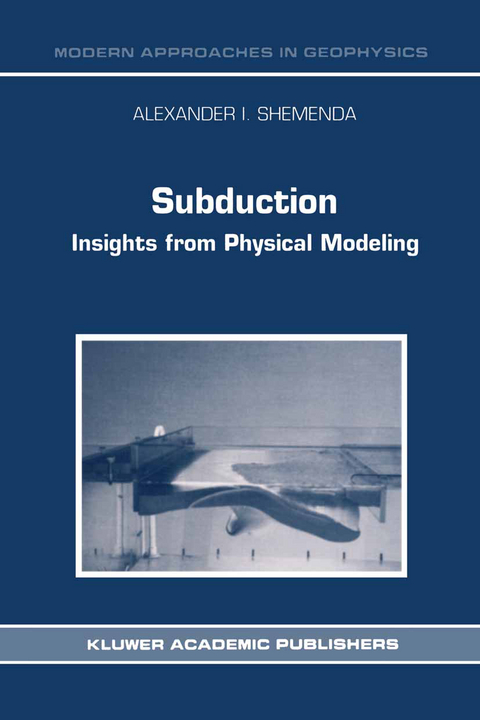
Subduction
Springer (Verlag)
978-94-010-4411-0 (ISBN)
This work is for geologists and geophysicists interested in geodynamics of the convergent plate boundaries and in mechanics of the lithosphere.
1. Similarity Criteria.- 1.1. Introduction.- 1.2. The general approach to physical similarity.- 1.3. Derivation of similarity criteria from the equations of continuum mechanics.- 1.4. Dilatant plasticity and brittle failure.- 1.5. Conclusions.- 2. Model Setting, Technique and Facilities.- 2.1. Introduction.- 2.2. General modeling scheme.- 2.3. Model materials.- 2.4. Experimental installation and technique.- 3. Initiation and Development of Subduction Under Horizontal Compression of the Lithosphere.- 3.1. Introduction.- 3.2. Results of the experiments.- 3.3. Analysis of experimental results.- 3.4. Formation of a subduction zone in a homogeneous oceanic lithosphere.- 3.5. Initiation of a subduction zone on an old inclined fault.- 3.6. Strain and stress in the subducting plate.- 3.7. Estimation of pressure between the plates in the subduction zone.- 3.8. Elastico-plastic bending of the subducting plate, its yield limit and modulus of elasticity.- 3.9. Conclusions.- 4. Relationship Between Subduction Regime and Back Arc Dynamics.- 4.1. Introduction.- 4.2. Experimental results.- 4.3. Hydrostatic suction of the plates.- 4.4. Stress in the overriding plate due to subduction of an old (dense) lithosphere.- 4.5. Other mechanisms for tension in the overriding plate.- 4.6. Influence of crustal thickness and density of the overriding plate on its stress state.- 4.7. Geodynamic interpretation of modeling results.- 4.8. The location of back arc rifting.- 4.9. Relationship of the back arc regime to relief and the gravity field in subduction zones.- 4.10. Benioff zone dip angle and back arc regime.- 4.11. On the cyclicity of back arc tension and compression.- 4.12. Vertical movements in subduction zones.- 4.13. On causes of the arcuate configuration of subduction zones.- 4.14. Relationof seismicity in the subduction zone with back arc dynamics.- 4.15. On the mechanism of back arc tension in some particular subduction zones.- 4.16. South-Sandwich subduction zone.- 4.17. Possible mechanism for evolution of the Scotia Sea region.- 4.18. The Aegean region.- 4.19. Conclusions.- 5. Jumps of Subduction Zones, Subduction Reversal, and Closing of Back Arc Basins.- 5.1. Introduction.- 5.2. Location of the lithospheric failure and jump of subduction zone.- 5.3. Mechanism for lithospheric failure and polarity of a new subduction zone.- 5.4. Deformation of the overriding plate in the Kuril subduction zone.- 5.5. Subduction of the continental margin: arc-continent collision in Taiwan.- 5.6. Conclusions.- 6. Continental Subduction.- 6.1. Introduction.- 6.2. Modeling approach.- 6.3. Similarity criteria and the model materials.- 6.4. Experimental results.- 6.5. Analysis of the results.- 6.6. Concluding remarks and possible application of the results to the India-Eurasia collision.- References.- Notations.
| Reihe/Serie | Modern Approaches in Geophysics ; 11 |
|---|---|
| Zusatzinfo | XI, 217 p. |
| Verlagsort | Dordrecht |
| Sprache | englisch |
| Maße | 155 x 235 mm |
| Themenwelt | Naturwissenschaften ► Geowissenschaften ► Geologie |
| Naturwissenschaften ► Geowissenschaften ► Geophysik | |
| Naturwissenschaften ► Geowissenschaften ► Hydrologie / Ozeanografie | |
| ISBN-10 | 94-010-4411-2 / 9401044112 |
| ISBN-13 | 978-94-010-4411-0 / 9789401044110 |
| Zustand | Neuware |
| Haben Sie eine Frage zum Produkt? |
aus dem Bereich


